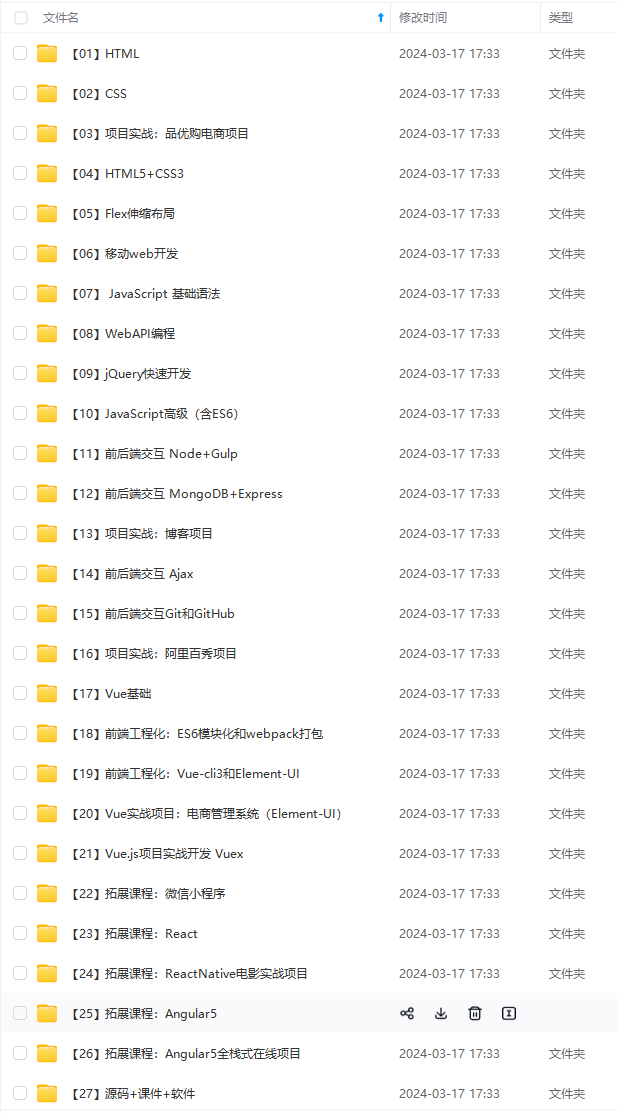// 1. sync from start
// (a b) c
// (a b) d e
while (i <= e1 && i <= e2) {
const n1 = c1[i]
const n2 = (c2[i] = optimized
-
? cloneIfMounted(c2[i] as VNode)
- normalizeVNode(c2[i]))
if (isSameVNodeType(n1, n2)) {
patch(
n1,
n2,
container,
null,
parentComponent,
parentSuspense,
isSVG,
slotScopeIds,
optimized
)
} else {
break
}
i++
}
// 2. sync from end
// a (b c)
// d e (b c)
while (i <= e1 && i <= e2) {
const n1 = c1[e1]
const n2 = (c2[e2] = optimized
-
? cloneIfMounted(c2[e2] as VNode)
- normalizeVNode(c2[e2]))
if (isSameVNodeType(n1, n2)) {
patch(
n1,
n2,
container,
null,
parentComponent,
parentSuspense,
isSVG,
slotScopeIds,
optimized
)
} else {
break
}
e1–
e2–
}
// 3. common sequence + mount
// (a b)
// (a b) c
// i = 2, e1 = 1, e2 = 2
// (a b)
// c (a b)
// i = 0, e1 = -1, e2 = 0
if (i > e1) {
if (i <= e2) {
const nextPos = e2 + 1
const anchor = nextPos < l2 ? (c2[nextPos] as VNode).el : parentAnchor
while (i <= e2) {
patch(
null,
(c2[i] = optimized
-
? cloneIfMounted(c2[i] as VNode)
- normalizeVNode(c2[i])),
container,
anchor,
parentComponent,
parentSuspense,
isSVG,
slotScopeIds,
optimized
)
i++
}
}
}
// 4. common sequence + unmount
// (a b) c
// (a b)
// i = 2, e1 = 2, e2 = 1
// a (b c)
// (b c)
// i = 0, e1 = 0, e2 = -1
else if (i > e2) {
while (i <= e1) {
unmount(c1[i], parentComponent, parentSuspense, true)
i++
}
}
// 5. unknown sequence
// [i … e1 + 1]: a b [c d e] f g
// [i … e2 + 1]: a b [e d c h] f g
// i = 2, e1 = 4, e2 = 5
else {
const s1 = i // prev starting index
const s2 = i // next starting index
// 5.1 build key:index map for newChildren
const keyToNewIndexMap: Map<string | number | symbol, number> = new Map()
for (i = s2; i <= e2; i++) {
const nextChild = (c2[i] = optimized
-
? cloneIfMounted(c2[i] as VNode)
- normalizeVNode(c2[i]))
if (nextChild.key != null) {
if (DEV && keyToNewIndexMap.has(nextChild.key)) {
warn(
Duplicate keys found during update:,
JSON.stringify(nextChild.key),
Make sure keys are unique.
)
}
keyToNewIndexMap.set(nextChild.key, i)
}
}
// 5.2 loop through old children left to be patched and try to patch
// matching nodes & remove nodes that are no longer present
let j
let patched = 0
const toBePatched = e2 - s2 + 1
let moved = false
// used to track whether any node has moved
let maxNewIndexSoFar = 0
// works as Map<newIndex, oldIndex>
// Note that oldIndex is offset by +1
// and oldIndex = 0 is a special value indicating the new node has
// no corresponding old node.
// used for determining longest stable subsequence
const newIndexToOldIndexMap = new Array(toBePatched)
for (i = 0; i < toBePatched; i++) newIndexToOldIndexMap[i] = 0
for (i = s1; i <= e1; i++) {
const prevChild = c1[i]
if (patched >= toBePatched) {
// all new children have been patched so this can only be a removal
unmount(prevChild, parentComponent, parentSuspense, true)
continue
}
let newIndex
if (prevChild.key != null) {
newIndex = keyToNewIndexMap.get(prevChild.key)
} else {
// key-less node, try to locate a key-less node of the same type
for (j = s2; j <= e2; j++) {
if (
newIndexToOldIndexMap[j - s2] === 0 &&
isSameVNodeType(prevChild, c2[j] as VNode)
) {
newIndex = j
break
}
}
}
if (newIndex === undefined) {
unmount(prevChild, parentComponent, parentSuspense, true)
} else {
newIndexToOldIndexMap[newIndex - s2] = i + 1
if (newIndex >= maxNewIndexSoFar) {
maxNewIndexSoFar = newIndex
} else {
moved = true
}
patch(
prevChild,
c2[newIndex] as VNode,
container,
null,
parentComponent,
parentSuspense,
isSVG,
slotScopeIds,
optimized
)
patched++
}
}
// 5.3 move and mount
// generate longest stable subsequence only when nodes have moved
const increasingNewIndexSequence = moved
-
? getSequence(newIndexToOldIndexMap)
- EMPTY_ARR
j = increasingNewIndexSequence.length - 1
// looping backwards so that we can use last patched node as anchor
for (i = toBePatched - 1; i >= 0; i–) {
const nextIndex = s2 + i
const nextChild = c2[nextIndex] as VNode
const anchor =
nextIndex + 1 < l2 ? (c2[nextIndex + 1] as VNode).el : parentAnchor
if (newIndexToOldIndexMap[i] === 0) {
// mount new
patch(
null,
nextChild,
container,
anchor,
parentComponent,
parentSuspense,
isSVG,
slotScopeIds,
optimized
)
} else if (moved) {
// move if:
// There is no stable subsequence (e.g. a reverse)
最后
自我介绍一下,小编13年上海交大毕业,曾经在小公司待过,也去过华为、OPPO等大厂,18年进入阿里一直到现在。
深知大多数初中级Android工程师,想要提升技能,往往是自己摸索成长,自己不成体系的自学效果低效漫长且无助。
因此收集整理了一份《2024年Web前端开发全套学习资料》,初衷也很简单,就是希望能够帮助到想自学提升又不知道该从何学起的朋友,同时减轻大家的负担。



既有适合小白学习的零基础资料,也有适合3年以上经验的小伙伴深入学习提升的进阶课程,基本涵盖了95%以上Android开发知识点!不论你是刚入门Android开发的新手,还是希望在技术上不断提升的资深开发者,这些资料都将为你打开新的学习之门!
如果你觉得这些内容对你有帮助,需要这份全套学习资料的朋友可以戳我获取!!
由于文件比较大,这里只是将部分目录截图出来,每个节点里面都包含大厂面经、学习笔记、源码讲义、实战项目、讲解视频,并且会持续更新!
想自学提升又不知道该从何学起的朋友,同时减轻大家的负担。**
[外链图片转存中…(img-DKiaa76x-1715663886668)]
[外链图片转存中…(img-0gaUMTmQ-1715663886668)]
[外链图片转存中…(img-pykXvcdF-1715663886668)]
既有适合小白学习的零基础资料,也有适合3年以上经验的小伙伴深入学习提升的进阶课程,基本涵盖了95%以上Android开发知识点!不论你是刚入门Android开发的新手,还是希望在技术上不断提升的资深开发者,这些资料都将为你打开新的学习之门!
如果你觉得这些内容对你有帮助,需要这份全套学习资料的朋友可以戳我获取!!
由于文件比较大,这里只是将部分目录截图出来,每个节点里面都包含大厂面经、学习笔记、源码讲义、实战项目、讲解视频,并且会持续更新!






















 1655
1655

 被折叠的 条评论
为什么被折叠?
被折叠的 条评论
为什么被折叠?








